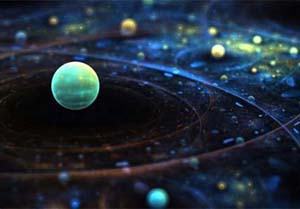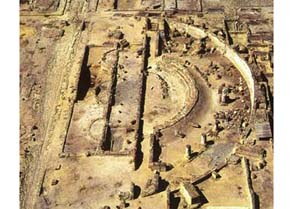 |
|
| Appunti scientifiche |
|
 |
|
| Appunti scientifiche |
|
| Visite: 1150 | Gradito: |
Leggi anche appunti:La TerraLa Terra č il terzo pianeta del sistema solare in ordine di distanza dal Sole; unico, The Black hole-il buco nero - TESINAThe Black hole-il buco nero Materie Le fasi della formazione del Sistema SolareLe fasi della formazione del Sistema Solare a) FASE 'ZERO' Inizio |
 |
 |
GEOCENTRIC MODEL
 The
geocentric model ( in ancient Greek: geo = earth and centron = centre) is a
theory which places the Earth at the centre
of the universe. Even if nowadays modern science rejects this model, it has
dominated ancient but also medieval astronomy.
The
geocentric model ( in ancient Greek: geo = earth and centron = centre) is a
theory which places the Earth at the centre
of the universe. Even if nowadays modern science rejects this model, it has
dominated ancient but also medieval astronomy.
This theory became more credible after the discovery of the approximately spherical shape of the Earth and great intellectuals like Aristotle and Ptolemy believed in that. According to the early astronomers, it was evident that the "rest of the universe", as for example the Sun, the Moon and the others planets. moved around the motionless Earth. In fact stars, the Sun and the Moon could be seen moving around the Earth following circular paths each day. So, it was perfectly reasonable for them to say that the Earth was stable and motionless, also because nothing could make it move. Then, the fact that objects, like meteorites, fall on the Earth was seen as another proof of this model: everything is "attracted" by the centre of the universe.
This model, that was theorised by the Greeks, continued to be accepted also during the Middle Ages because it was in accordance with the theocentric( god- centred) world view dominant in that period.
The geocentric model asserts that all the bodies of the Universe follow perfect circular paths. This choice was not done accidentally. In fact the circle was for the mathematicians and philosophers of the ancient Greece the perfect geometric figure, and for this reason it was the only figure appropriate to describe celestial motions. They theorised the existence of 55 spheres around which the Sun, the Moon and all the others stars move(called deferents) .
However, astronomers observed that the patterns covered by celestial bodies were not constant. For example the path of the Moon changed each month and the configuration of the constellations changed according to the season. These changes were explained by the variation of speed at which the celestial bodies revolved around the Earth.
However there was another problem: the planets behaved in ways that were difficult to describe and they obtained the name planets because of this reason ( in ancient Greek the word "planetes" meant wanderer). In fact, sometimes they showed retrograde motions; that means that they seemed to stop and start to move in reverse direction if compared to the position of fixed stars, which did not move. To overcome this new problem, Greek astronomers increased their efforts, that culminated in the work of Claudius Ptolemy ( 90- 168 A.D.). They managed to create new complicated models in which planets moved on circular paths called epicycles that were superimposed on circular orbits about the Earth, that are the deferents. So, a "personal" deferent and epicycles was given to each planet. They were able to describe the particular motion and speed of the single planet.
 Mercury and Venus were placed between the Moon
and the Sun; instead, Mars, Jupiter and Saturn were placed beyond the Sun.
Mercury and Venus were placed between the Moon
and the Sun; instead, Mars, Jupiter and Saturn were placed beyond the Sun.
Ptolemy changed another important thing: he displaced the Earth from the centre of the universe and he said that the spheres revolved around a point called eccentric, the geometric centre of the Universe, that was near the Earth but not on it. Thanks to the improving in the methods of observation and measurement , the models continued to become more and more complicated, in order to overcome the contradictions that appeared constantly between the theory and the observations.
This model has survived despite all the problems and the continuous variations for 14 centuries and there are some reasons for that: the first is the fact that there are not evident proof of the movements of the Earth if we don't use instruments of observation. Then, ancient and medieval astronomers were not able to measure time precisely, so they could not compare the data and, at the same time, they were not able to see and calculate the movements of the stars (that is the proof of the movements of the Earth) because they did not have the right instruments to do that. Finally, as said before, the Christian religion adopted this theory that could perfectly explain its theocentric world view and placed humankind in a privileged position in the Universe ( men are the Creatures of God). Those who tried to underline and overcome the problems of the geocentrism were judged heretics and because of that, also heliocentrism could not accepted at first.
At the end of its long life, the geocentric model became so complicated that the King of Castile, Alfonso X ( 1221-1284) said ironically that if God had asked his advice while creating the Universe, he would have suggested a simpler design of that. During the XVIth century, this theory started collapsing: it was time to change, it was the time of heliocentrism.
 |
| Appunti su: content, cosmologia, |
|
| Appunti Ecologia ambiente |  |
| Tesine Geografia |  |
| Lezioni Archeologia |  |